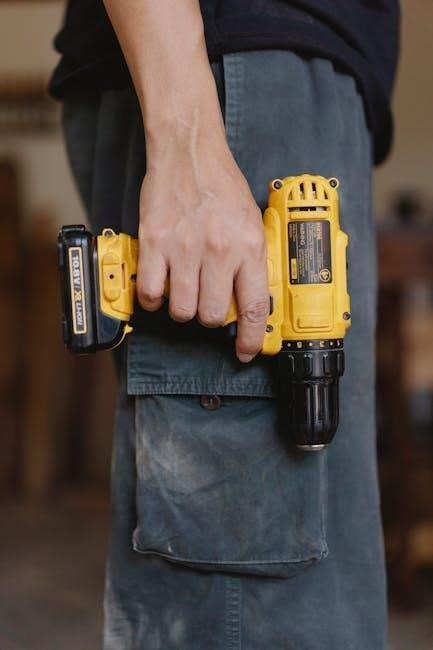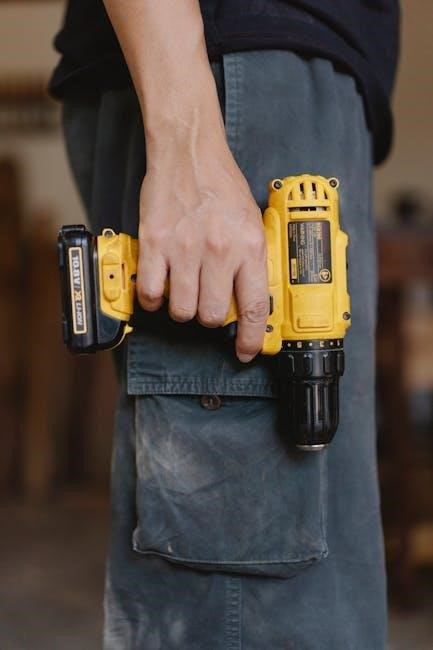The Nikon D200 is a professional-level DSLR introduced in November 2005, succeeding the D100. It features a 10.2 MP CCD sensor, 3.0 fps continuous shooting, and robust manual controls.
1.1 Overview and Significance
The Nikon D200, released in November 2005, is a professional-level DSLR that bridges the gap between enthusiast and professional cameras. Known for its robust build and advanced features, it offers a 10.2 MP CCD sensor, 3.0 fps shooting, and extensive manual controls. Its versatility and customization options made it a favorite among photographers, leaving a lasting impact in the photography world.
1.2 Basic Specifications
The Nikon D200 features a 10.2 MP CCD sensor, capturing images up to 3872 x 2592 pixels. It offers ISO sensitivity from 100 to 1600, extendable up to HI-1. The camera supports 3.0 fps continuous shooting and boasts a 2.5-inch LCD with 0.94x magnification. These specifications make it a powerful tool for photographers seeking high-quality results in various lighting conditions.

Key Features
The Nikon D200 boasts a 10.2 MP CCD sensor, delivering crisp images. It offers 3.0 fps burst mode for capturing action and a 2.5-inch LCD for precise previewing.
2.1 10.2 MP CCD Sensor
The Nikon D200 features a 10.2-megapixel CCD sensor, capturing detailed images with a maximum resolution of 3872 x 2592 pixels. The sensor’s 23.6mm x 15.8mm size ensures excellent image quality, with sensitivity ranging from ISO 100 to 1600. This setup delivers vibrant colors and sharp details, making it ideal for professional and enthusiast photographers seeking high-quality results in various lighting conditions.
2.2 Burst Mode Capability
The Nikon D200 offers a burst mode capability, capturing up to 3.0 frames per second. This feature is ideal for action photography, allowing photographers to shoot continuous images quickly. The camera supports CF memory cards, ensuring smooth performance during rapid shooting sessions. Burst mode enhances the ability to freeze dynamic moments, making it a valuable tool for capturing fast-moving subjects effectively.
2.3 LCD Display Details
The Nikon D200 features a 2.5-inch LCD display with a magnification factor of 0.94x, offering a clear view of images and settings. The screen provides wide-angle viewing and supports brightness adjustment for optimal visibility in various lighting conditions. It also supports PictBridge for direct printing and enhances functionality during shooting, playback, and menu navigation with its intuitive design and clarity.

Manual Controls Explained
The Nikon D200 offers precise manual controls for aperture, shutter speed, and ISO, allowing photographers to fine-tune settings for creative and technical precision in various shooting scenarios.
3.1 Aperture Control
The Nikon D200 allows precise aperture control via its intuitive command dial, enabling photographers to adjust f-stops for depth of field and exposure. The camera supports a wide range of aperture settings, catering to both automatic and manual modes. This feature is essential for creative control, allowing users to emphasize subjects or blur backgrounds effectively.
3.2 Shutter Speed Control
The Nikon D200 offers shutter speeds from 30 seconds to 1/8000th of a second, plus bulb mode for extended exposures. This range provides precise control over motion and blur, allowing photographers to freeze fast action or create artistic effects. The camera’s shutter system is durable and ensures consistent performance in different scenarios.
3.3 ISO Control
The Nikon D200 offers ISO sensitivity from 100 to 1600, adjustable in 1/3, 1/2, or 1 EV increments. This flexibility allows photographers to shoot in various lighting conditions, minimizing noise while maintaining image quality. The camera also includes a Hi-1 setting, extending sensitivity by 1 EV beyond 1600. Manual ISO control ensures precise adjustments, catering to creative and technical needs effectively.

Shooting Modes
The Nikon D200 offers Aperture Priority, Shutter Priority, and Manual modes, providing photographers with precise control over exposure settings.
4.1 Aperture Priority Mode
In Aperture Priority Mode, users set the aperture, while the camera automatically adjusts the shutter speed. This mode is ideal for controlling depth of field, allowing photographers to prioritize creative focus effects. The D200’s manual controls shine here, enabling precise adjustments for professional-level photography.
4.2 Shutter Priority Mode
In Shutter Priority Mode, users set the shutter speed, and the camera automatically adjusts the aperture. This mode is perfect for capturing motion effects, such as freezing fast action or creating blur. The D200 excels in this mode, offering precise control over shutter speeds to achieve desired visual effects, making it ideal for dynamic photography scenarios.
4.3 Manual Mode
Manual Mode offers full control over both aperture and shutter speed, allowing photographers to customize settings for precise results. Ideal for advanced users, this mode enables creative control over exposure, making it perfect for unique lighting conditions. The D200’s manual controls are intuitive, ensuring a seamless experience for capturing professional-quality images tailored to individual artistic vision.
White Balance and Autofocus
The Nikon D200 features precise white balance settings, including auto, preset, and manual modes, ensuring accurate color reproduction. Its advanced autofocus system offers multiple modes for sharp, reliable focus control in various shooting scenarios.
5.1 White Balance Settings
The Nikon D200 offers multiple white balance modes, including Auto, Incandescent, Fluorescent, Direct Sunlight, Flash, Cloudy, and Shade. These settings ensure accurate color reproduction in various lighting conditions. Fine-tuning options allow for precise adjustments to suit individual preferences or specific scenes.
A manual white balance mode is also available, enabling users to set a custom white balance using a reference object. This feature, combined with the camera’s 1,005-pixel RGB sensor, provides enhanced control over color accuracy for professional-grade results.
5.2 Autofocus Modes
The Nikon D200 offers three primary autofocus modes: Single-Servo AF (AF-S) for stationary subjects, Continuous-Servo AF (AF-C) for moving subjects, and Manual Focus (M) for direct control. The camera features an 11-area autofocus system, with a cross-type sensor in the center for enhanced accuracy. Compatibility with AF, AF-S, and AI-S lenses ensures versatile focusing options for various shooting scenarios.

Menu System Navigation
The Nikon D200 features an intuitive menu system, including Shooting, Custom Settings, and Setup menus. These allow photographers to adjust image quality, autofocus modes, and custom functions, enhancing control and customization.
6.1 Shooting Menu
The Shooting Menu on the Nikon D200 allows photographers to adjust key settings for capturing images. Options include image size, quality, white balance, and ISO sensitivity. Users can also enable noise reduction and set the shooting mode. This menu is crucial for tailoring camera settings to specific lighting conditions and creative goals, ensuring optimal results.
6.2 Custom Settings Menu
The Custom Settings Menu on the Nikon D200 offers extensive personalization options. Users can tailor camera functions to their preferences, such as autofocus modes, metering patterns, and bracketing options. With multiple custom settings available, photographers can fine-tune the camera’s behavior for specific shooting scenarios. This menu is particularly useful for professionals seeking precise control over their equipment.

Custom Settings Configuration
The Nikon D200’s custom settings configuration allows users to tailor camera functions to their preferences, enhancing control and shooting efficiency for personalized photography experiences.
7.1 Custom Function D1
Custom Function D1 controls the focus confirmation beep, which signals successful autofocus. By default, it’s enabled, but disabling it is recommended for discrete shooting. However, in bright light, the beep can aid visibility of the red focus confirmation light, making it useful in specific scenarios. Adjusting this setting tailors camera behavior to user preferences for optimal performance in various environments.
7.2 Other Custom Settings
Beyond Custom Function D1, the Nikon D200 offers a variety of additional customization options. These include settings for autofocus modes, metering patterns, and flash control. Users can tailor the camera’s behavior to suit their shooting preferences, enhancing workflow efficiency and creative control. These options are accessed through the Custom Settings menu, allowing for precise adjustments to optimize performance in diverse photographic situations.

Battery and Memory Management
The Nikon D200 uses EN-EL3e lithium-ion batteries and supports AA batteries with the MB-D200 grip. It utilizes CompactFlash memory cards for storage, ensuring reliable performance and flexibility.
8.1 Battery Types
The Nikon D200 primarily uses the EN-EL3e lithium-ion battery, offering reliable performance and extended shooting sessions. Additionally, the optional MB-D200 battery grip supports AA batteries, providing flexibility and versatility for photographers who need extended power options in the field.
8.2 Memory Card Options
The Nikon D200 supports CF (CompactFlash) memory cards, including Type I and II, with capacities up to 4GB or 8GB, depending on the card type. For optimal performance, high-speed CF cards are recommended to ensure fast data writing and transfer speeds, making it ideal for continuous shooting and large image files.

Accessories
The Nikon D200 supports various accessories like the MB-D200 battery grip, remote shutter release, and LCD monitor covers, enhancing functionality and user experience.
9.1 Battery Grips
The Nikon MB-D200 battery grip is designed for the D200, offering extended shooting sessions. It supports up to two EN-EL3e batteries or six AA batteries via the MS-D200 holder. The grip features a vertical shutter release and command dials, enhancing ergonomics for portrait shooting. It is ideal for professionals and enthusiasts requiring uninterrupted photography sessions.
9.2 Remote Shutter Release
The Nikon D200 is compatible with the MC-30 or MC-36 remote shutter releases, enabling precise control without camera shake. These accessories enhance stability, ideal for low-light, macro, or landscape photography. Using a remote shutter release minimizes vibrations, ensuring sharper images. It’s a must-have for professionals and enthusiasts seeking optimal shooting experiences.
Troubleshooting Common Issues
Common issues include focus confirmation beep interference and LCD glare. Regularly cleaning the sensor and using compatible memory cards can prevent many problems.
10.1 Common Problems
The Nikon D200 may face issues like focus confirmation beep interference, LCD glare, and sensor dust. Memory card errors and battery drain are also reported. Regular cleaning and firmware updates help mitigate these issues.
10.2 Solutions
Enable custom function D1 to disable the focus confirmation beep. Use a screen protector to reduce LCD glare. Regularly clean the sensor and camera exterior. Format memory cards in-camera for errors, and ensure batteries are fully charged or replaced. These solutions enhance performance and longevity of the Nikon D200.

Advanced Shooting Techniques
Explore advanced methods like bracketing for dynamic range and RAW capture for detailed post-processing. These techniques enhance image quality and creative control in photography with the Nikon D200.
11.1 Bracketing
Bracketing on the Nikon D200 allows capturing multiple exposures of the same scene at different settings, ideal for high-contrast scenarios. The camera supports up to five frames with adjustable increments, enabling precise control over dynamic range. This feature is accessed via the camera’s menu, making it easy to enhance detail in both bright and dark areas for optimal image results.
11.2 RAW Image Capture
The Nikon D200 supports RAW image capture, storing data in a 12-bit NEF format. RAW files retain maximum image detail, allowing for greater flexibility in post-processing. With an average file size of 12 MB, RAW capture is ideal for professional photographers seeking high-quality results and precise control over image adjustments.

Resources for Further Learning
Explore official Nikon manuals, online guides, and courses for mastering the D200. The Magic Lantern book offers detailed insights and practical tips for optimizing camera settings and techniques.
12;1 Official Manuals
The official Nikon D200 manual provides a comprehensive guide to camera operations, settings, and features. Available for free download from Nikon’s website, it includes detailed instructions, diagrams, and troubleshooting tips. The manual covers everything from basic functions to advanced settings, ensuring users can fully utilize the camera’s capabilities. Additional resources like quick start guides are also available for easier learning.
12.2 Online Guides and Courses
Online guides and courses for the Nikon D200 offer comprehensive resources to master its controls and settings. Websites like Scribd provide detailed manuals, while forums and communities share practical tips and techniques. The Magic Lantern guide is particularly praised for its in-depth coverage and helpful advice, catering to both beginners and experienced photographers. These resources enhance learning and improve photography skills effectively.

































































